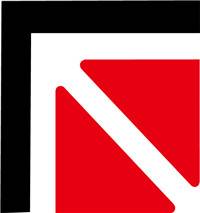Gypsum (CaSO4 2H2O) is a mineral extracted from deposits formed by the evaporation of brine where sulfuric acid comes into contact with calcium carbonate. Over the past 150 years, a number of highly productive gypsum quarries have operated on Michigan’s Lower Peninsula, selling the mineral in the form of gypsum, plaster, and fertilizer. Agricultural gypsum is used as a soil fertilizer and contains approximately 22% calcium and 18% sulfur. Most soils in Michigan provide enough calcium to grow soybeans. However, coarse-grained soils with low mineralization potential for sulfur in organic matter may be at risk of sulfur deficiency, limiting soybean yields. This has been due to the reduction in atmospheric sulfur deposits from air pollution since the passage of the Clean Air Act of 1963 (once reaching 8-15 pounds per acre per year) and the removal of sulfur contaminants from fertilizers and pesticides, more and more common. phenomenon.
In 2014, the Soybean Management and Research (SMaRT) Research Project was launched in Rogers, Michigan to evaluate gypsum as a source of calcium and sulfur in soybean production. Gypsum was applied to the surface at a rate of 0.5 tons per acre before planting at a product cost of $22.50 per acre and an application cost of $9.29 per acre compared to the untreated control. The plot was 40 feet wide and 200 feet long, and Pioneer 91M01 soybeans were planted 7.5 inches apart at a density of 175,000 seeds per acre. Both treatments were randomized and repeated four times. The trial began on May 23, 2014. The soil was Cheboygan loam with a pH of 6.9 and a cation exchange capacity (CEC) of 5.1 meq/100 g. The previous crop was wheat, followed by oats as a cover crop, and the seeds were treated with an inoculant before sowing. The topmost fully developed shamrock was selected for nutritional analysis on 6 August and the soybeans were harvested on 1 November.
*Soybean yield was significantly different (p<0.05). Yield adjusted to 13% moisture. ** Analysis of nutrients in the tissue of the first leaf of the shamrock.
For soybeans, an adequate calcium content range is 0.35% to 2.00%. Both treatments provided adequate calcium. The sulfur content of soybeans ranges from 0.20% to 0.40%. The gypsum treatment turned soybeans from mild sulfur deficiency to optimal sulfur content. It is important to note that an application of 20 to 40 pounds of sulfur per acre will usually eliminate the sulfur deficiency. Our plaster treatment delivers 180 pounds per acre. This ratio was chosen to emphasize the claimed benefits of gypsum as a soil additive capable of improving tillage and water infiltration. However, in coarse soils, these physical properties did not matter, and it was assumed that the measured yield increase was associated only with sulfur fertilizer. If so, lower interest rates could do the same.
Interestingly, in addition to addressing the problem of sulfur deficiency, gypsum treatment also increased nitrogen uptake by soybean plants. This may be due to the interrelated roles of sulfur and nitrogen in protein synthesis, where sulfur deficiency limits efficient uptake and utilization of nitrogen. There are other less ideal food interactions. In our experiments, gypsum treatment limited the uptake of magnesium and boron by soybeans. Calcium is known to chemically compete with other cations such as magnesium, thereby inhibiting boron uptake. Our gypsum treatment brings soybean plants from a state of abundance to a state of moderate deficiency of these minor and micronutrients. However, there is anecdotal evidence that gypsum-treated plants had greener color, longer internodes, more healthy nodules, and more pods per plant, although these variables were not measured (see figure). The yield difference between the treated gypsum and the untreated control was statistically significant, averaging 6.6 bushels per acre (p<0.05, see table). The total cost of product and application was $31.79 per acre.
In the context of this test, the gypsum produced attractive results. However, other sulfur sources such as ammonium sulfate (AMS), potassium sulfate, elemental sulfur, and organics are available and may have advantages over gypsum. On the one hand, other sources do not contain significant amounts of calcium, which can interfere with the absorption of secondary nutrients and micronutrients. In addition, AMS and elemental sulfur can acidify alkaline soils, while gypsum and potassium sulfate have little effect on soil pH. Many manufacturers have used AMS as an adjuvant for glyphosate. Adding manure or cover crops to cropping systems as a source of organic sulfur can provide other benefits such as improved water holding capacity and increased biological activity.
This article was published by Michigan State University Extension. For more information visit https://extension.msu.edu. To receive newsletters directly to your inbox, visit https://extension.msu.edu/newsletters. To connect with experts in your field, visit https://extension.msu.edu/experts or call 888-MSUE4MI (888-678-3464).
MSU is a positive action, equal opportunity employer committed to excellence through a diverse workforce and an inclusive culture that encourages everyone to reach their full potential.
MSU Extension programs and materials are open to anyone, regardless of race, color, national origin, gender, gender identity, religion, age, height, weight, disability, political opinion, sexual orientation, marital status, marital status, or veteran status. Acts of May 8, 1914 and June 30, 1914, passed in cooperation with the United States Department of Agriculture, to promote MSU expansion efforts. Quentin Tyler, Director, MSU, East Lansing, MI 48824. This information is for educational purposes only. Mention of a commercial product or trademark does not imply endorsement by MSU Extension or any prejudice against a product or trade that is not mentioned.
Post time: May-06-2023








